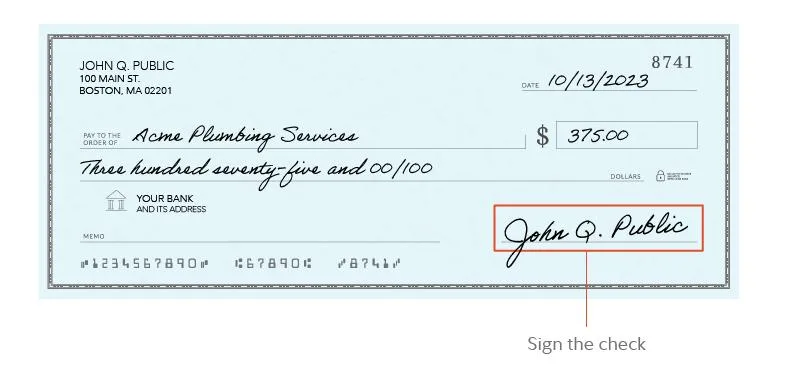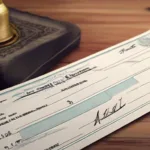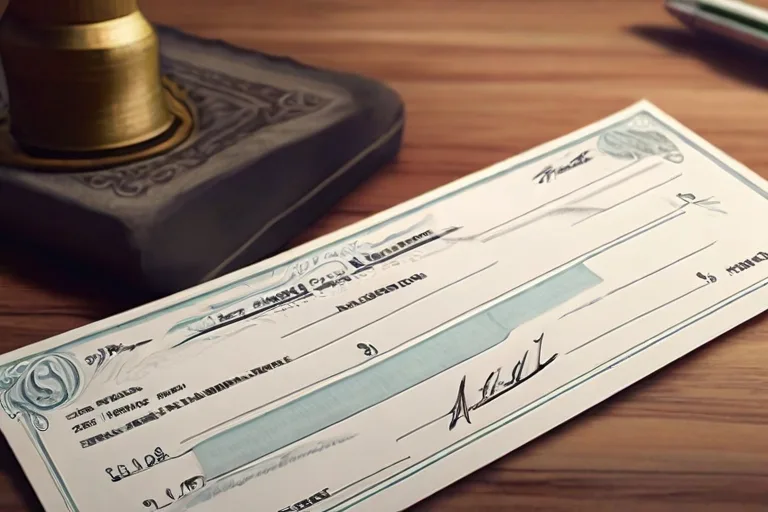Writing a check is a fundamental skill that may seem old-fashioned in our digital age, yet it remains an essential part of personal finance management. Young adults venturing into the world of banking and fiscal responsibility may find themselves needing this skill, particularly in situations where electronic payments aren’t an option. To equip yourself with this financial know-how, we’ve put together a comprehensive guide on how to write a check.
The Importance of Proper Check Writing
When it comes to managing your finances, understanding how to properly fill out a check is crucial. Mistakes can lead to bounced checks, bank fees, or potential fraud. Knowing this skill ensures you can confidently pay bills, rent, or settle debts without hassle.
A Tour of a Typical Check
Before we start with the process of writing a check, it’s essential to familiarize yourself with the various components of a check.
- Date Line: Usually found at the top right-hand corner, where you’ll enter the date.
- Payee Line: Labeled “Pay to the Order of,” this is where you write the name of the individual or business you’re paying.
- Amount Box: Situated next to the payee line, a box where you write the payment amount in numbers.
- Amount Line: Below the payee line, where you write the payment amount in words.
- Memo Line: Often on the bottom left, an optional field to note the payment’s purpose.
- Signature Line: The bottom right line where you sign to authorize the check.
Step-by-Step on How to Write a Check
Now it’s time to break down the process into simple, easy-to-follow steps.
Step 1: Enter the Date
Start by writing the current date on the date line. This records when the check was written and can help both you and the recipient keep accurate financial records.
Step 2: Write the Recipient’s Name
On the payee line, write the name of the individual or entity you wish to pay. Ensure to spell it correctly to avoid any processing issues.
Step 3: Fill in the Amount in Numbers
In the amount box, write the payment amount in numerical form. Start as far left as possible to prevent fraudsters from adding to the amount.
Step 4: Write the Amount in Words
Directly below the payee line, write out the payment amount in words. If the amount includes cents, write these as a fraction (e.g., Fifteen and 50/100).
Step 5: Add a Memo (Optional)
The memo line isn’t mandatory, but it’s a good practice to include a note, especially for personal records or providing payment details to the recipient.
Step 6: Sign Your Check
The signature is your authorization for the bank to withdraw the specified amount from your account. Without it, the check will not be valid.
Common Mistakes and Tips to Avoid Them
While writing a check is straightforward, errors can occur. Here are some crucial tips to avoid common check-writing pitfalls.
Ensure Accurate Details
Mistakes in the recipient’s name or the amounts can lead to rejected checks. Always double-check the details before handing over or mailing the check.
Keep It Neat
Messy handwriting can lead to processing delays or errors. Writing legibly is of utmost importance.
No Blank Spaces
Ensure there are no gaps when writing the payment amount. This precaution helps prevent fraudulent alterations.
Examples of Common Mistakes
- Incorrect Date: Using the wrong date, such as a backdated or postdated check, can cause delays or rejection.
- Misspelled Payee Name: A simple spelling mistake in the recipient’s name may lead to the inability to cash or deposit the check.
- Mismatched Amounts: When the numeric and word amounts don’t match, banks typically go by the amount written in words, but this can lead to processing issues or delays.
- Unsigned Checks: Forgetting to sign a check is a common oversight that renders the check invalid.
- Incomplete Filling: Leaving sections of the check blank, particularly the memo section when it’s necessary for record-keeping or clarification purposes, can create confusion.
- Alterations without Initials: Any changes on a check must be initialed. Failing to do so can make the check appear fraudulent.
Safeguarding Your Checks
Learning how to write a check is only half the battle; it’s also vital to know how to protect them. Keep your checkbook in a secure location and consider shredding voided or canceled checks. Monitor your bank account regularly to detect any unauthorized transactions promptly.
Summary of Key Points
In summary, writing a check is a critical financial skill that involves a few important steps. Remember to:
- Fill in the date on the date line to ensure both you and the recipient maintain accurate records.
- Specify the recipient by writing their name clearly on the payee line.
- Indicate the amount in numerals in the amount box and spell it out in words on the amount line.
- Use the memo line for additional details about the payment (optional but recommended).
- Sign the check on the signature line to authorize the transaction.
Avoid common mistakes by double-checking the recipient’s name and amounts, writing legibly, ensuring there are no blank spaces, and keeping the details consistent. Protect your checks and regularly monitor your bank account for any unauthorized transactions. By following these steps and precautions, you can confidently and securely manage your check transactions.

Conclusion
Check-writing may seem like a relic, but it’s an indispensable tool in your financial toolkit. Young adults who master this skill will find themselves better equipped to manage their money. Remember, attention to detail and accuracy are critical components in how to write a check. Additionally, safeguarding your checks and regularly monitoring your accounts are habits that extend beyond check writing to broader personal finance best practices.
Writing a check is one of those activities where, despite its simplicity, careful execution is key. Use it as an opportunity to display the responsible fiduciary you are becoming. With this guide, you can write checks confidently and accurately, ensuring seamless financial transactions.








